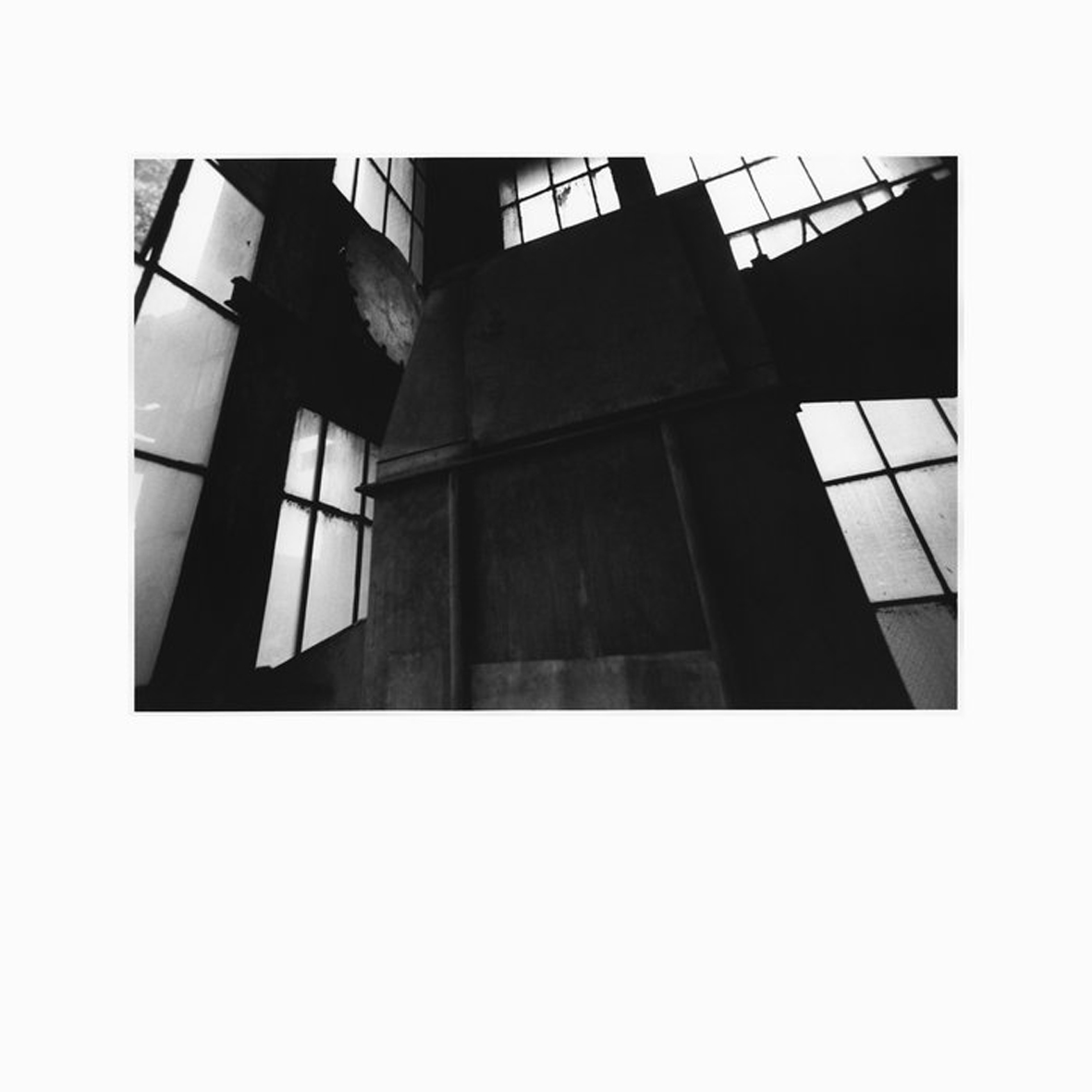HEXA, "Factory Photographs"
 Xiu Xiu’s Jamie Stewart and Lawrence English are not two artists that I would have ever thought to pair together, but a shared appreciation for David Lynch is probably as solid a foundation for a collaboration as any.  Also, HEXA makes perfect sense given the circumstances:  Xiu Xiu recorded an incredible Twin Peaks homage,  Brisbane's Gallery of Modern Art assembled a major retrospective of Lynch’s work, and Lawrence English is one of Australia’s most prominent and distinctive sound artists.  Notably, however, this commissioned accompaniment to Lynch's photographs of abandoned factories sounds almost nothing like either English or Xiu Xiu.  Instead, it sounds a hell of a lot like an artfully restrained and simmering noise album.  More specifically, Factory Photographs is industrial music in the most literal sense of the word, resembling nothing less than the troubled dreams of a ruined and long-deserted factory.
Xiu Xiu’s Jamie Stewart and Lawrence English are not two artists that I would have ever thought to pair together, but a shared appreciation for David Lynch is probably as solid a foundation for a collaboration as any.  Also, HEXA makes perfect sense given the circumstances:  Xiu Xiu recorded an incredible Twin Peaks homage,  Brisbane's Gallery of Modern Art assembled a major retrospective of Lynch’s work, and Lawrence English is one of Australia’s most prominent and distinctive sound artists.  Notably, however, this commissioned accompaniment to Lynch's photographs of abandoned factories sounds almost nothing like either English or Xiu Xiu.  Instead, it sounds a hell of a lot like an artfully restrained and simmering noise album.  More specifically, Factory Photographs is industrial music in the most literal sense of the word, resembling nothing less than the troubled dreams of a ruined and long-deserted factory.
The most immediately striking aspect of Factory Photographs is how completely Jamie Stewart's aesthetic is subsumed by this commission.  There is absolutely no distinctive aspect of Xiu Xiu’s sound that survives at all, aside from the vaguest elements imaginable, such as "a tendency towards darkness" and "a fondness for harsh textures." Of course, English’s vision does not assert itself all that much either, though Photographs does bear some textural resemblance to his upcoming Cruel Optimism album, albeit with absolutely all of the musical elements excised.  English has worked extensively with field recordings in the past though and that is what Factory Photographs most closely resembles: field recordings of crunching and clanging machines collaged, embellished, and enhanced.  The opening "Sledge" effectively presents the template for the entire project:  echoing clashes of metal, deep crunches and rumbles, subdued and pulsing machine rhythms, menacing feedback, and unexpected transformations of mood. Admittedly, the mood palette here is quite limited, probably only covering "tense," "brooding," and "haunted," but those are all moods that I am quite fond of.
Yet another immediately noticeable feature of this album is that feels like part of an installation (which I suppose it is) rather than a series of stand-alone compositions.  It often feels like quite a harrowing installation though, so if English and Stewart were aiming for mere industrial ambiance, they chose a particularly visceral and menacingly intrusive strain of it.  This album definitely has some teeth.  That said, the overall feel throughout Factory Photographs is that of rusted, churning machinery violently rattling and spraying sparks alone in a cavernous empty space.  With that as the baseline, however, Stewart and English periodically erupt into a handful of striking set pieces.  The gnarled feedback of the opening "Sledge" is one such moment, but it was not until the one-two punch of "Lumber" and "Ring Bark" that Factory Photographs truly grabbed and held my attention.  In "Lumber," a clipped, locked groove-style rhythm relentlessly carries along a howling and crunching cacophony that sounds like a giant machine has gone mad and started tearing apart its surroundings.  "Ring Bark" is a bit more subtle, but no less mesmerizing, as its initial ghostly hum of feedback unexpectedly explodes into a stuttering rhythm of static that sounds like the end of a record being playing at a disconcerting speed.  I suspect Lynch himself would appreciate that small nightmarishly surreal touch.
To my ears, those are probably the strongest pieces on the album, but there are number of other wonderfully haunting motifs strewn through Photographs, like the slowly quavering and uncomfortably harmonizing moans of "There Never Was," the dissolving eruptions of flutters in "Over Horizontal Plains," and the slow-motion volcano of shuddering static that is "The Body."  Given that two of the album’s ten pieces are mere snippets that last less than a minute, English and Stewart rack up quite a strong hit-to-miss ratio, even if it all tends to rapidly flow by in an all-too-brief blur. Weirdly, I am not quite sure if that is a triumph of sequencing or a flaw, as it is hard to tell if Factory Photographs was intended a series of incidental pieces seamlessly stitched together into a coherent whole or an attempt at a fully formed album that needed a little padding to reach an acceptable length.  More likely, it is the former, but it still feels more like a (delicious) snack than a meal.  Of course, that also means that no pieces ever overstay their welcome, which I greatly appreciate.  More importantly, I was quite impressed at how completely Factory Photographs succeeds in other regards.  For one, it feels like a true collaboration with a strong and distinctive vision: if it sounds a bit like a Lawrence English album, it at least sounds like a sinister negative image of one.  Also, HEXA unquestionably nails the grainy, desolate, and unreal mood of Lynch's photographs, which was the whole point of this collaboration.  While it probably is not an essential release within either artist’s canon, it feels like much more than just a soundtrack and is a fine way to imbue my home with an appropriate atmosphere of Lynchian dread.
Samples:
 
 



